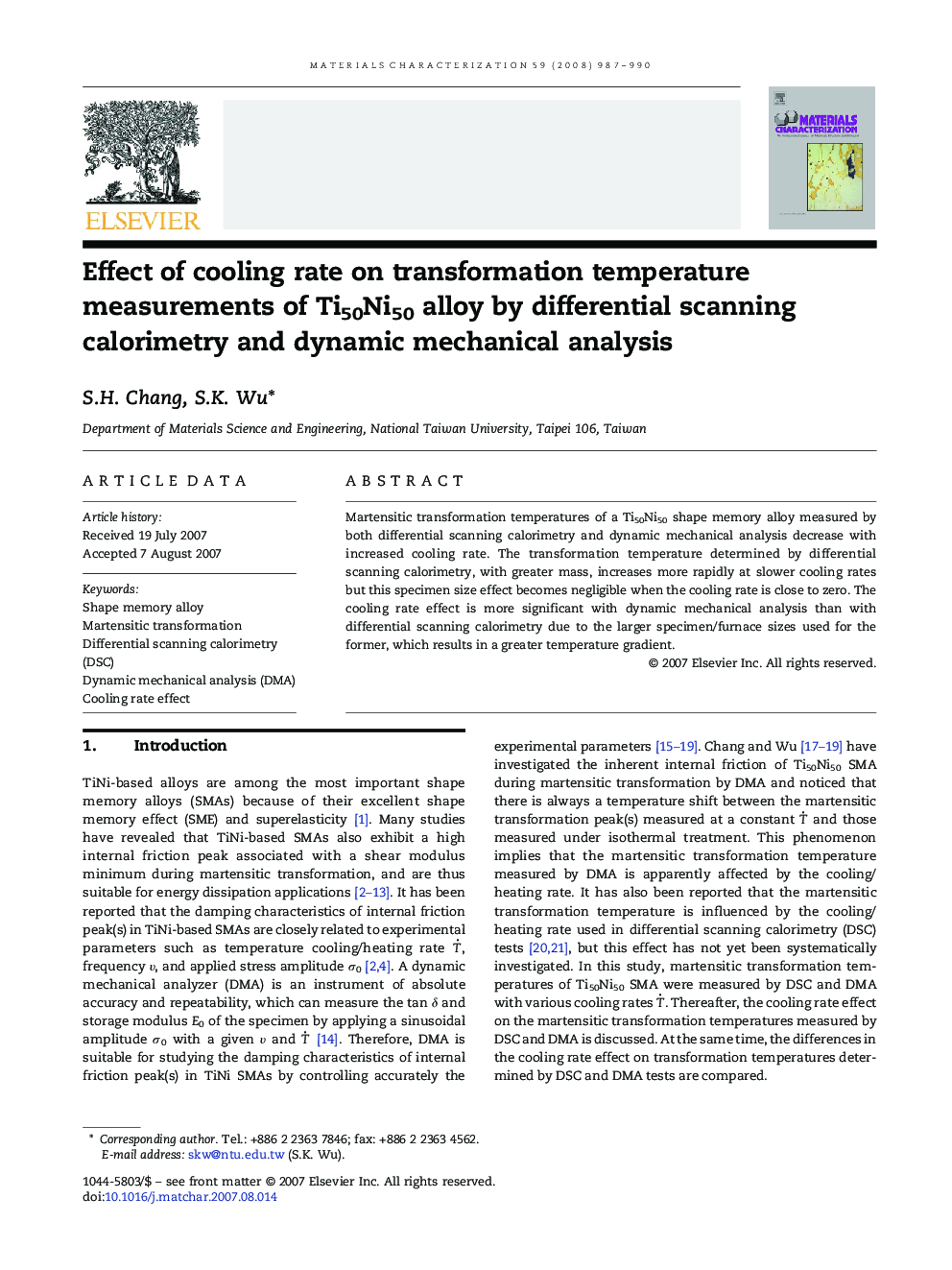| Article ID | Journal | Published Year | Pages | File Type |
|---|---|---|---|---|
| 1572846 | Materials Characterization | 2008 | 4 Pages |
Abstract
Martensitic transformation temperatures of a Ti50Ni50 shape memory alloy measured by both differential scanning calorimetry and dynamic mechanical analysis decrease with increased cooling rate. The transformation temperature determined by differential scanning calorimetry, with greater mass, increases more rapidly at slower cooling rates but this specimen size effect becomes negligible when the cooling rate is close to zero. The cooling rate effect is more significant with dynamic mechanical analysis than with differential scanning calorimetry due to the larger specimen/furnace sizes used for the former, which results in a greater temperature gradient.
Keywords
Related Topics
Physical Sciences and Engineering
Materials Science
Materials Science (General)
Authors
S.H. Chang, S.K. Wu,
